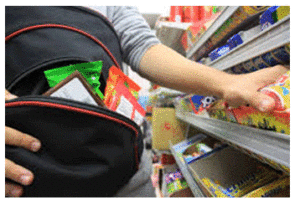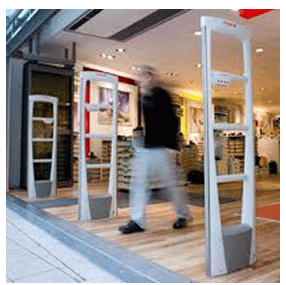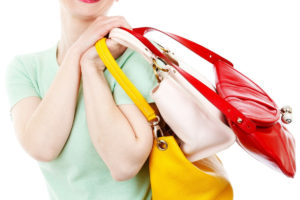Inventory, policies and procedures, and every aspect of how you run your store should be checked regularly. Implementing policies, or business procedures in your store and never checking whether they are working or not is not profitable. Is your return policy being carried out as it was implemented? Are you letting employees go unsupervised when it comes to returns? There are many employees that are exceptional workers and work diligently and honestly, but it’s always better to maintain an atmosphere where they know the owner or management of the store are on top of things.
For more news about this and other topics, follow the links below.
Businesses rally to prevent shoplifting
TUCSON (KGUN9-TV) – Serial shoplifters cost business owners in Pima County $5.91 million a year. On Wednesday, the Pima County Attorney, law enforcement, and local retailers partnered together for the new “We Watch, We Prosecute” campaign to stop thieves.
Increase tools for retailers to identify and help prosecute organized retail thieves by working more with law enforcement.
Westport police capture serial shoplifter
Detectives from the Westport Police Department have arrested a man they say is responsible for a number of shoplifting incidents at Lee’s Supermarket.
Police arrested Gutemberg Freitas of Westport for allegedly shoplifting more than $150 during a number of visits to the supermarket. Freitas was dubbed the “gassy bandit” after taking a package of Beano food enzyme supplements out of its packaging and leaving the store without paying for the supplements.
Police say Freitas, on a number of occasions, removed the Universal Product Code (UPC) labels from items then swapped them out with less expensive items. His thefts trace back as far as November 2016.
Diebold Nixdorf debuts world’s smallest self-checkout at National Retail Federation’s BIG show
CLEVELAND, Ohio — Imagine heading to your favorite supermarket and having the store know not only that you’re coming in, but what you plan to buy. Then as you walk through the aisles putting items in your cart, you’re also scanning them with your phone, which keeps a running tally of how much you’re spending as you go.
When you’re ready to check out, you bypass the lines at the registers and head straight to the self-checkout terminal, where you pay for your purchases with cash or a credit card swipe, and walk out.
That’s the kind of scenario that Diebold Nixdorf, the Summit County-based ATM and bank security company, envisions as it unveils what it calls “the world’s smallest self-checkout concept” at the National Retail Federation’s NRF BIG Show in New York on Jan. 15-17.
Diebold Nixdorf’s latest innovation lets customers withdraw cash or pay for their purchases at a kiosk that’s less than 10-inches wide, or the length of one and a half dollar bills. The kiosks take up a fraction of the floor-space of current ATMs and self-checkout registers and combines those abilities within a single unit that can fit almost anywhere, the company said.

 How did your retail business do in 2016? Face it, regardless of how well you did or did not do, you could have done much better. The key is to keep your cash, assets and merchandise on YOUR bottom line not someone else’s. Thieves take the money you could have had away, easily in some cases.
How did your retail business do in 2016? Face it, regardless of how well you did or did not do, you could have done much better. The key is to keep your cash, assets and merchandise on YOUR bottom line not someone else’s. Thieves take the money you could have had away, easily in some cases.
 If you were asked what area of your store would present the most opportunity for employee theft and fraud, what would you answer? The checkout lanes where cashiers have access to the register, the ability to pass merchandise,
If you were asked what area of your store would present the most opportunity for employee theft and fraud, what would you answer? The checkout lanes where cashiers have access to the register, the ability to pass merchandise,
 drawer. IF someone reaches towards the drawer the register should be shut. Registers should be closed immediately following a transaction. If a cashier is sorting through the money or “straightening” they could be slipping money out and pocketing it or dropping money, then putting it in their pocket. Don’t “exchange” bills for patrons, there are some shoplifters who also engage in short changing and confusing cashiers and steal money using this method. Others will argue they did not get the right amount of change and start reaching in the till. If there is a dispute over change a manager needs to conduct a till audit with a partner, in the cash office. If there are enough registers in the store, limit one cashier to one register, when the cashier is done for the day, their money goes in their bag with a supervisor present and the supervisor drops it in the cash cart and rolls it to the cash office. Keep large bills under the till, if they are on top they are easy to see and easier for a grab and run. Consider purchasing locking till covers for registers that have money in them but are not currently in use. There are traveling shoplifting rings and till tap rings that have register keys and will open drawers if no one is paying attention. Till covers prevent someone from getting to the cash even if they open the drawer. Finally, when a register has too many large bills or excessive amounts of money, do a skim and take the excess to the cash office.
drawer. IF someone reaches towards the drawer the register should be shut. Registers should be closed immediately following a transaction. If a cashier is sorting through the money or “straightening” they could be slipping money out and pocketing it or dropping money, then putting it in their pocket. Don’t “exchange” bills for patrons, there are some shoplifters who also engage in short changing and confusing cashiers and steal money using this method. Others will argue they did not get the right amount of change and start reaching in the till. If there is a dispute over change a manager needs to conduct a till audit with a partner, in the cash office. If there are enough registers in the store, limit one cashier to one register, when the cashier is done for the day, their money goes in their bag with a supervisor present and the supervisor drops it in the cash cart and rolls it to the cash office. Keep large bills under the till, if they are on top they are easy to see and easier for a grab and run. Consider purchasing locking till covers for registers that have money in them but are not currently in use. There are traveling shoplifting rings and till tap rings that have register keys and will open drawers if no one is paying attention. Till covers prevent someone from getting to the cash even if they open the drawer. Finally, when a register has too many large bills or excessive amounts of money, do a skim and take the excess to the cash office.

 The busiest shopping season of the year is almost done.
The busiest shopping season of the year is almost done. Light-When someone is looking to do no good to your property, they feel more secure if it looks like no one is home. The key is to confuse them and make them feel unsure. Remember, most burglars are lazy. If they are not sure about your house, they will move on. So you should have at least two light timers (three is better) set up and running seven days a week. These should be in different areas of the home and should come on and off at different times. Use the random or security feature found on most timers. This will vary the on/off time every day just a little in case someone is watching the house for a pattern.
Light-When someone is looking to do no good to your property, they feel more secure if it looks like no one is home. The key is to confuse them and make them feel unsure. Remember, most burglars are lazy. If they are not sure about your house, they will move on. So you should have at least two light timers (three is better) set up and running seven days a week. These should be in different areas of the home and should come on and off at different times. Use the random or security feature found on most timers. This will vary the on/off time every day just a little in case someone is watching the house for a pattern.  Each year retailers take inventory of their merchandise, counting what they have in the store, reconciling that information against sales receipts, vendor credits and receipts and markdowns. Usually the result is some amount of shortage or merchandise shrink due to merchandise that cannot be accounted for and losses due to certain markdowns and damaged products. I have in rare instances seen overages, but those are usually the result of offsets from prior year shortages often attributed to paperwork errors. The store objective each year should be to improve upon the prior year inventory result. Certainly the best case would be to have zero dollar shortages every year, but that is not a realistic expectation. I try to explain to employees that if one package of gum were to be stolen during the year, you have incurred shortage. There are steps a store owner or manager can take to work towards that yearly improvement and shoot for a zero dollar shrinkage year.
Each year retailers take inventory of their merchandise, counting what they have in the store, reconciling that information against sales receipts, vendor credits and receipts and markdowns. Usually the result is some amount of shortage or merchandise shrink due to merchandise that cannot be accounted for and losses due to certain markdowns and damaged products. I have in rare instances seen overages, but those are usually the result of offsets from prior year shortages often attributed to paperwork errors. The store objective each year should be to improve upon the prior year inventory result. Certainly the best case would be to have zero dollar shortages every year, but that is not a realistic expectation. I try to explain to employees that if one package of gum were to be stolen during the year, you have incurred shortage. There are steps a store owner or manager can take to work towards that yearly improvement and shoot for a zero dollar shrinkage year.